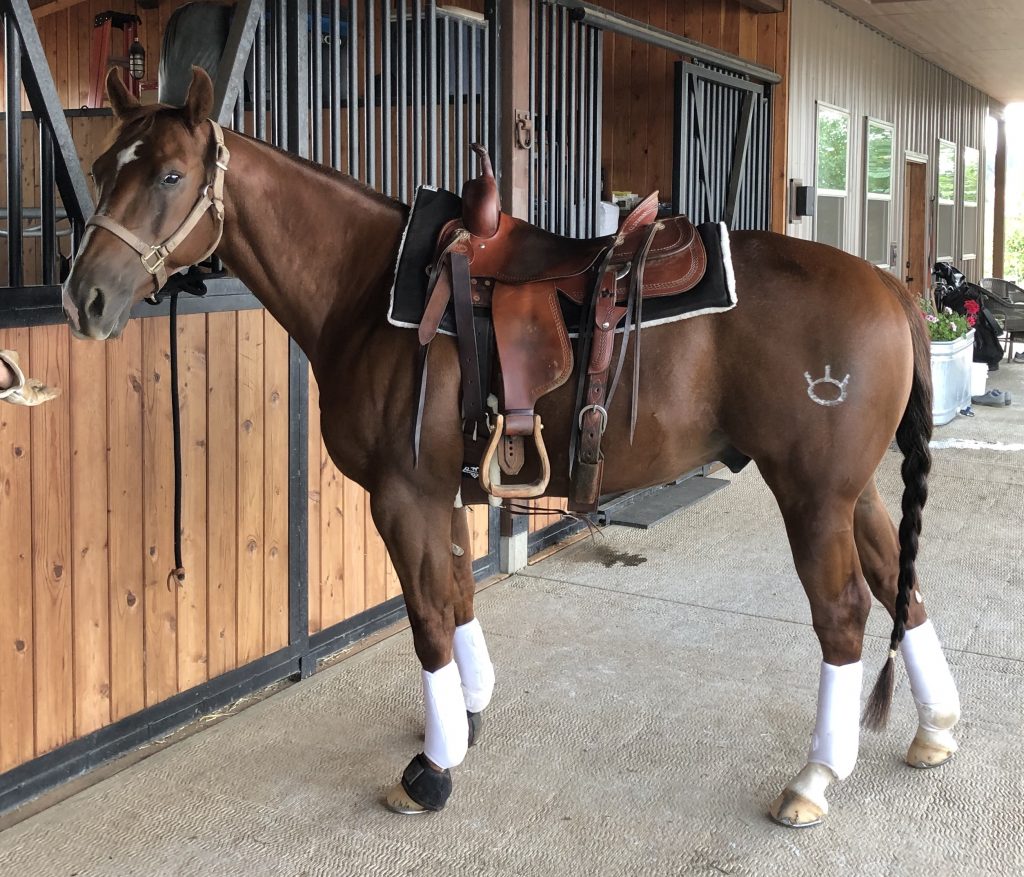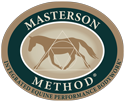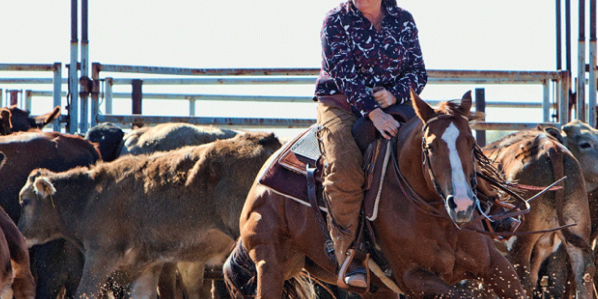By Lisa Haldane, MMCP and owner of Avalon Performance Horse and Rider Support
In Part One of this series, I talked about what the daily routine is like for cutting horses when they are in a training and show environment. It was descriptive of the life of the horses that show at the highest levels, competing for world titles.
The shows at this level are approved by the National Cutting Horse Association (NCHA). Like other high level western performance horse organizations, the NCHA divides its competitions into “aged events” (horses 3-6 years old) and weekend events where horses can be any age. The most prize money is won at the aged events. In terms of the hierarchy of events in cutting, from most to least intense for the horses, the structure is:
- Aged events
- NCHA approved weekend events (people hauling for national titles and world finals will be showing in these shows, we call them “haulers”)
- Local club events
I wanted to point out this distinction because the level and type of management of the horses at these events will be different. It will be helpful to understand how intense the program for the horse is before you enter into the picture.
The horses competing in the aged events and weekend haulers will be extremely fit and their health and soundness will be managed very carefully. This level of competition requires that the people who support the horses really understand the show environment, equine anatomy and recognition of injuries and physical discomfort, and can work in a way that is supportive of, and not distracting to, the goals of the program. The techniques that I use on horses in this environment are more limited than those that I would use on horses that are shown only occasionally. The reason for this is that deep releases of tension on these horses can actually destabilize the ability of the horse to stop and turn properly. In the attached picture of my horse Reydirkulous, you can see how he needs to be able to hold his shoulders upright with his weight back on his hind end, with hind legs spread wide to balance through the turn and push off to stop the cow in its next run before it reaches the wall of the arena.

If I do work on him prior to a show that interferes with this stability, he has to work harder to hold himself together. With this in mind, it can be counterproductive to do the under scapula technique, hind leg in and out, hind leg down and back with psoas release, and any work that is very slow and deep. I have to hold myself back from the deep and profound releases of tension even though it’s in my nature to want to do it, I’ve learned that I can actually put the horse at a disadvantage, especially when he will be schooled by a trainer prior to showing.
Bodywork that involves deeper releases of tension is excellent, but should be used in periods between shows and with the horse able to have 3-4 days to integrate the work before being put back into a training session.
So what is helpful at the show? First, I mentioned in Part One of this series that choosing the time of day to work on the horse that is quietest will give the horse the best opportunity to benefit from the work. This is typically in the late afternoon or evening when the horse is rested, rehydrated, and fed.
The techniques which then can bring great comfort to the cutting show horse in the Masterson tool kit are:
- Bladder Meridian
- Lateral Cervical Flexion
- Gentle Withers Release (not too deep, but really helps with relaxing the back and hind end)
- Front Legs Down and Forward/Back/Side
- Hind Legs Down and Forward/Back but without psoas release
- Lateral and Diagonal Rocking (really important through the ribcage and along the top of the back)
- Withers Wiggle
- Head Up/Down (gently and without asking too much)
- Tongue Release
- Sternum Lift
When you have the opportunity to give the horse several days to integrate the work, then really great techniques to add include:
- Groin Release
- Psoas Release with hind leg down and back
- Hind End Points with emphasis on Stifle Point and Under Tail Points
- Pubic Symphysis Point
- Sternum Lift/Roll
- Diagonal and Dorsal Arches

To be an asset in this environment you really need to observe and get feedback on the results of your work. We know as Masterson practitioners that sometimes when we take away the brace that a horse has built in to compensate for some discomfort that you might have a horse that reveals soundness issues. It’s hard, but you have to understand that this was not your fault. This is when you need to have a great relationship with the people involved in the training/conditioning of the horse so you can have honest conversations about the results of the work. You will learn each horse as an individual and, hopefully, have the opportunity to work through the elimination or management of primary causes of discomfort while not putting the horse at a greater disadvantage by weakening its ability to support itself in its environment. As your skills of observation improve, you will refine your techniques to optimally help each individual horse.
At the local club cutting level, it’s likely that the horses are less fit and may be more physically challenged because their joints are not maintained as often or their feeding program is unbalanced or deficient in key nutrients. In this situation, I would tend towards working on horses that are at least in good physical fitness because those that are not will already be working hard to try to hold themselves together with inadequate physical strength and I wouldn’t want to further destabilize them.
I hope this overview has helped provide some insight into how to approach the situation of working on cutting performance horses. Up next in Part Three will be some discussion of working with the younger cutting horse in training.
Learn more in the Beyond Horse Massage Book!
Get hands on training at a Beyond Horse Massage Weekend Seminar.













